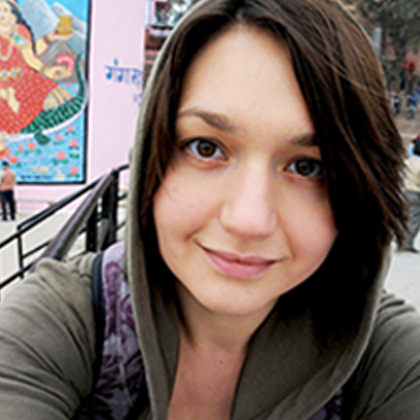- Posted by:
- anjci
- Under:
- Travel: Asia
Bhutan is a landlocked kingdom in the Eastern Himalaya, sandwiched between India in the south (as well as east and west) and Chinese Tibet in the north.
When I told my mother I was travelling to Bhutan, she cringed for a moment before erupting in a long tirade on why anyone needed to visit a “religious dictatorship” where democratic freedoms were restricted and sharia law was pretty much in place.
It did not take me long to realise my mother had confused Bhutan with Brunei. I placated my poor parent: besides both being small Asian nations, the two could not have been more different.
Over 70% of Bhutan’s territory is covered with forests, well above the constitutionally stipulated minimum of 60%. The country is breathtakingly mountainous, with several peaks exceeding 7,000 meters in height – the fact which may be chiefly responsible for the fact that Bhutan has never been colonised or invaded by a foreign power in its entire history.
Bhutan is mountainous and densely covered with forests (taken on the Taktshang Goemba hike)
In fact, Bhutan claims to have the world’s highest unclimbed mountain, Gangkhar Puensum, the country’s highest peak rising to 7,570 meters above sea level. Unlike in the nearby Nepal, mountain climbing is not an industry: the climbing of mountains over 6,000 meters in height has been illegal since 1994, and the belief that mountains are akin deities which should not be disturbed is strong in the Buddhist country.
Gangkhar Puensum, viewed here from Dochu-La pass, is Bhutan’s highest peak
Most people associate Bhutan with Gross National Happiness (GNH), the metric immortalised in 1972 by the country’s fourth king, Jigme Singye Wangchuck. The concept has become Bhutan’s trademark and a source of great pride to locals. The name decorates many a souvenir visitors take home.
These days the original idea of GNH has evolved into a loose socioeconomic development framework, which Bhutan’s authorities use in their five-year planning process. It is based on four pillars: sustainability, cultural values, protection of the environment and good governance. An inspirational pursuit, it nevertheless does not mean that Bhutan comes across as a particularly happy (or unhappy) nation to an average visitor.
Some happy, some sad: A local lady prays at Zilukha Nunnery in Thimphu
Young girl is carried on her mother’s shoulders in Chimi Lhakhang village
Nation’s top archer of 2015, Tashi Peljor, aims for the target in Paro
Bhutan: How to visit
Visiting Bhutan is surprisingly easy – if one has deep pockets. There are no restrictions on the number of visitors to the country. Before entering, nearly all travellers must have their visas pre-approved by the authorities. It is only possible to apply for the visa by booking an organised tour with a government-certified local travel agency, which handles the application on the traveller’s behalf. The travel agency will also book all hotel accommodation and car transfers, as well as flights in and out of Bhutan if the traveller so wishes (I chose to book the flights myself).
It is not possible for westerners to visit Bhutan outside an organised tour. Only the citizens of India enjoy a more relaxed visa regime with Bhutan: they can enter with their own cars and need much simpler permits along the way. I have also seen Tibetan monks entering Bhutan to visit the holy sites without the pre-arranged visa.
My favourite photo of the trip is of the young girl watching Jakar Tsechu festival in Bumthang
Bhutan was without doubt the most expensive trip I have ever undertaken. The sole reason for this is the mandatory minimum tariff of USD 250 per day which non-Indian travellers (Indians are exempt) must pay to the local travel agency organising their tour. Solo travellers and couples pay a surcharge of USD 30-50 per day. Days can easily add up, making Bhutan a very expensive place to visit, especially compared to other South Asian countries.
The tariff covers all accommodation costs, all car transfers in Bhutan, all meals and the services of at least two companions: the guide and the driver. On trekking holidays, the tariff also covers camping equipment. International and domestic flights are however not included and can exponentially inflate the already high price tag.
Bhutan has two airlines: Druk Air (state owned) and Bhutan Airlines (private). Both serve pretty much the same limited list of international destinations, including Kathmandu, Delhi, Bangkok and Singapore.
I pass over the Himalaya on board a Drukair plane from Delhi to Bhutan
I came via Delhi, which, however, is not everyone’s first choice. Bhutanese airlines do not code-share with any foreign carrier, making swift connections impossible. It is therefore necessary to exit the transfer area, pass immigration, retrieve luggage and then check in all the way for the next flight. I happened to have a valid Indian visa from trips earlier this year; I could also have asked a member of staff to get my bag and check it in for me in Delhi. In this sense, looser immigration rules in Kathmandu, Bangkok and Singapore make them more obvious connection choices, though Delhi is still the easiest hop from London.
Bhutan: Journey from Thimphu to Bumthang
Before arriving, I had planned a 10-day visit combining nature with culture. I first explored the capital city of Thimphu before driving via the Dochu-la mountain pass to the historic Punakha, the country’s former capital located in the picturesque namesake valley.
Rice paddies had already harvested by late October (taken near Punakha)
Buddhist monks are a common sight everywhere in Bhutan
Khamsum Yuelley Namgyal Chorten near Punakha offers beautiful views
I was then taken to Phobjikha valley, a well-known roosting area of black-necked cranes in the winter, and Bumthang, Bhutan’s cultural heartland.
Phobjikha valley was the coldest stop on my trip (taken on a frosty morning in Gangtey)
Bhutanese ladies dress up elaborately in national dress for local festivals (taken in Bumthang)
Trongsa Dzong (fortress) is the largest in Bhutan
Finally, I flew to Paro and spent three days exploring the surrounding area, including what is easily Bhutan’s most celebrated sight: Taktshang Goemba better known as Tiger’s Nest Monastery.
Best known as Tiger’s Nest Monastery, Taktshang Goemba is Bhutan’s most famous sight
Boys will be boys: schoolboys play after classes in Paro
Buddhist prayer flags are another common sight in Bhutan (taken near Taktshang Goemba)
Fiercely independent on my trips, I found the constant presence of my guide – a nice fellow, no doubt – debilitatingly painful. Unlike in places such as North Korea and Turkmenistan, being accompanied by a certified guide outside hotels is however not a requirement in Bhutan, so it is possible to negotiate with your guide for some freedom. There are no restrictions on what foreigners are allowed to visit and see in Bhutan.
Seeing my obvious struggle on an organised tour, my guide often let me visit tourist sites by myself and take extra solo walks in towns and cities. Having paid so much money for the services of a guide, however, made this suboptimal. It was also possible to take walks before the agreed time of departure in the morning and after the drop-off to the hotel in the evening. Many hotels are located in fairly isolated areas, however, so I often resorted to walking along dirt roads for cars to the nearest settlement and back.
I would really want to say that Bhutan was the most amazing trip I have ever undertaken. I was left breathless at the beauty of the many Himalayan peaks dotting Bhutan’s horizon in the backdrop of pristine blue skies. I was fascinated by Bhutan’s culture – so intensely intertwined with the Buddhist beliefs and preserved lovingly over the years. The memories from a tsechu – a colourful singing and dancing festival I watched in Bumthang – still make me smile and admire the locals’ creativity and wit. The sight of remote monasteries perched on sheer rock at high altitude was truly unforgettable. And the local food was spicy and superb.
Weather clears up in Bhutan in October and November to reveal spectacular mountain views
Dancers perform in costumes at Jakar Tsechu festival in Bumthang
Typical Bhutanese dishes are not found in tourist restaurants
However, I would love to have experienced all of the above at my own speed and in my own way. The image of an obvious tourist with a pre-approved itinerary (albeit put together by myself) led around by a guide disagreed strongly with me. Travel spontaneity had been entirely removed from a trip where I had been granted permits to visit particular areas on particular days, without any freedom to deviate. I had to insist to be served the yummy local food instead of the fairly bland hotel fare offered to 99% of tourists in Bhutan.
Was Bhutan worth the steep cost? On the one hand, the country is truly spectacular and unlike anywhere else in the world. On the other hand – as ashamed as I am about not fully enjoying such a privileged experience – in hindsight I would much rather have invested the funds in visiting a place with wider freedoms to feel like an independent traveller, not a “chilip” (Bhutanese for “foreigner”) on a leash.
Bhutan: Travel tips
My biggest tip would be to sit on the northern side of the plane when travelling to Bhutan from Delhi and Kathmandu. The Himalayan views are absolutely superb on clear days, and the flight captain announces Mount Everest when it becomes visible.
Not the Everest itself but close enough, as viewed from the plane bound for Bhutan
The best months to visit Bhutan are October and November when the summer rains retreat, revealing glorious mountain views. March and April are also popular, offering abundant colourful flowers and the freshness of the spring.
Jomolhari, covered in snow, is Bhutan’s second highest peak
Try and include a tsechu (see above) in your visit – it was the absolute highlight of my trip. The most popular tsechus are held in Paro and Thimphu, but I enjoyed the relative intimacy of the smaller event in Bumthang.
Dancer performs the Black Hat Dance (Shana) at Jakar Tsechu festival in Bumthang
To soften a typical tourist experience, do ask to be taken to local restaurants for lunch and dinner. Unlike the common belief, tourists do not have to eat all their meals in hotels and tourist restaurants. Even the latter can serve local fare – just ask for the same food your guide and driver are having (they would typically eat separately from you).
Momos, a kind of dumplings with various fillings, originate in Tibet
Finally, I highly recommend Wind Horse Tours – the travel agency I went with.


































Comments